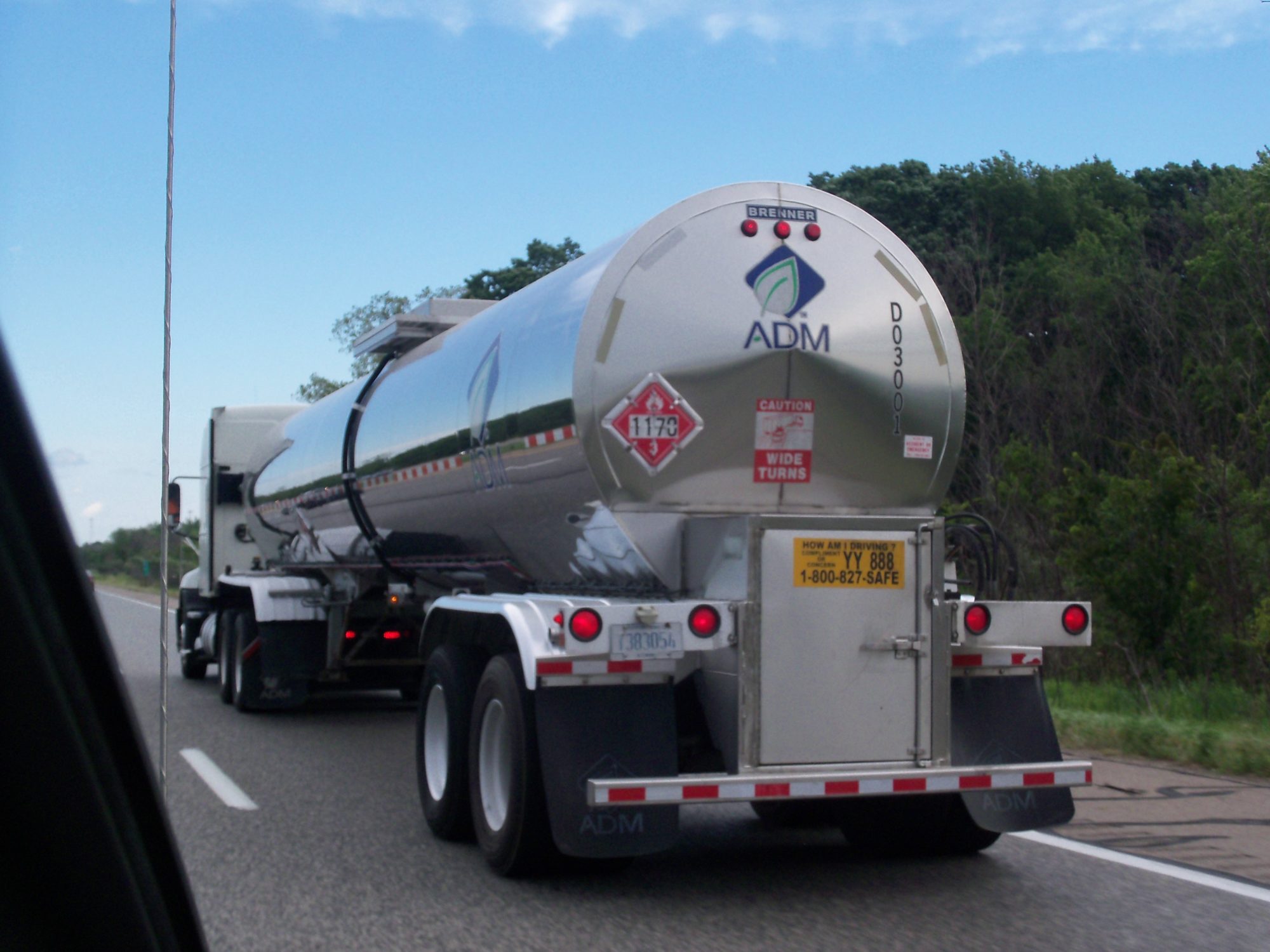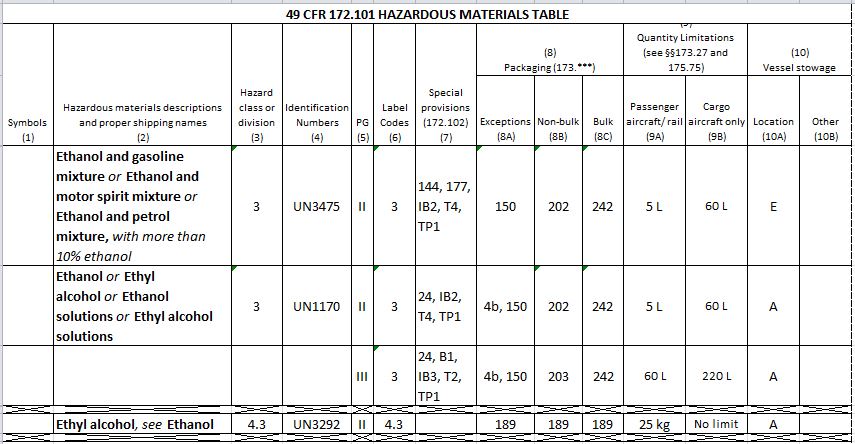I get questions from all over the world. Like this one on October 19, 2020:
Hi Daniel,
I am trying to make sense of all the regulations regarding shipping dangerous goods for my PhD study and ended up on your website.
Would you perhaps be able to clarify some things for me?
Not sure if this is a problem if you specialize more in US regulations: I am looking for West/Central Africa to Europe exchanges! I am just going to start with what I hope to be a simple question: what are the restrictions for transporting ethanol (>70%) from Europe to West Africa, in terms of volume, packaging and paperwork?
I got really confused with technical details when reading up on things, so your help will be much appreciated!
Kind regards,
Contact me with any questions you may have about the transportation of hazardous materials by air, highway, vessel, or rail International and Domestic Daniels Training Services, Inc. 815.821.1550 |
My reply the same day:
I can assist you. Please advise on the following:
- Will transportation be by air or vessel?
- If by air, what is the air carrier?
- What is the volume of ethanol you intend to ship? Per inner packaging? Per outer packaging?
I look forward to assisting you.
More information was quickly provided:
Dear Daniel,
Thank you very much for your swift reply.
So, on the way there, right now it looks like I will have to take 5 to 6 bottles of 1L “with me” when travelling by plane to West Africa. Is that allowed, what arrangements should be made?
On the way back, it gets a bit more complicated:
- we are looking at perhaps 5 to 10 samples of lion tissue in 50mL tubes (so ethanol < 500ml) per box
- but with many more (~100) faecal samples in same tubes but with silica beads (I’m specifying this as I believe this will impact your answer)
Many thanks for your time,
Contact me the next time your USDOT, IATA (air), or IMO (vessel) training is due to expire. |
My reply later that day:
Please see below.
- That quantity of dangerous good you indicate: 5-6 x 1L of Ethanol, cannot be transported by air as a passenger’s checked or carry-on baggage per 2.3 of the International Air Transport Association Dangerous Goods Regulations (IATA DGR). It must be shipped as a fully-regulated dangerous good.
- You must contact a commercial air carrier (UPS, FedEx, other) to arrange for its transport by air as a dangerous good.
- The samples coming back may be easier as they may be transported as passenger baggage without air carrier approval if it can meet the requirements of 2.3.5.12 of the IATA DGR:
- Non-infectious specimens.
- Wrapped in paper or cloth and then heat-sealed bag w/ no more than 30 mL of free liquid or vials or rigid container in heat-sealed bag of no more than 30 mL free liquids.
- Placed in another plastic bag with absorbent.
- Finished bag placed in strong outer packagings with suitable cushioning.
- No more than 1 L of ethanol in completed packaging.
- Package marked: “scientific research specimens, not restricted”
I hope this helps. Please contact me with any other questions.
The next day, October 20, 2020 (maybe it was the same day in Europe, I don’t know.):
Dear Daniel,
Thank you very much for all the info, this is very helpful!

- Any chance zip-lock bags can be accepted instead of heat-sealed ones? I think I know your answer but I have to ask just in case.
- You also say no more than 1L of ethanol in completed packaging. Does this also mean that just a 1L bottle ethanol, maybe in particular packaging, in passenger baggage is fine? Just checking where the limits are.
Many thanks for your time and help,
My reply:
Please see below.
- The regulations require a heat-sealed bag (and more) for the samples as baggage.
- The limit of no more than 1 L of ethanol (or other flammable liquid used as preservative) is just for the samples as baggage. It requires the inner packagings within the completed package to contain no more than 30 mL of ethanol as free liquid. You may not transport a 1 L bottle of ethanol as baggage on an aircraft, no matter the packaging.
- The 1 L bottles you intend to bring to Africa must be packaged and shipped as a dangerous good with a commercial air carrier.
- Depending on its Packing Group it may be eligible for the limited quantity exception which will make transportation by air somewhat easier and perhaps less expensive.
- Packing Group II may be transported as a limited quantity pursuant to packing instructions Y341.
- Packing Group III may be transported as a limited quantity pursuant to packing instructions Y344.
Please note, my email was only a brief summary of the complete regulations. You must research and comply with the complete regulations.
I hope this helps. Please contact me with any other questions.
That seemed to make things crystal clear (10.21.20):
Dear Daniel,
Thank you very much, crystal clear. This has been incredibly helpful!
Have a nice day,
Like this article? Subscribe to my Monthly Newsletter No marketing emails! |
That should help international relations!
It’s important to remember that the transportation of hazardous materials (aka: dangerous goods) takes place all around the world. Transportation by air will likely be subject to the Dangerous Goods Regulations of the International Air Transport Association (IATA). IATA has a biennial training requirement for shippers and packers of dangerous goods.




 The ethanol industry is widely distributed throughout the U.S. – with the largest concentration in the Midwest – and promises to become more so as cellulosic ethanol production creates more potential feed-stocks for the the production of fuel-grade ethanol. All that production in the Midwest with the demand predominantly on the coasts means that a lot of hazardous materials: Ethanol and Ethanol and fuel mixtures; must be transported from their supply to the demand.
The ethanol industry is widely distributed throughout the U.S. – with the largest concentration in the Midwest – and promises to become more so as cellulosic ethanol production creates more potential feed-stocks for the the production of fuel-grade ethanol. All that production in the Midwest with the demand predominantly on the coasts means that a lot of hazardous materials: Ethanol and Ethanol and fuel mixtures; must be transported from their supply to the demand.